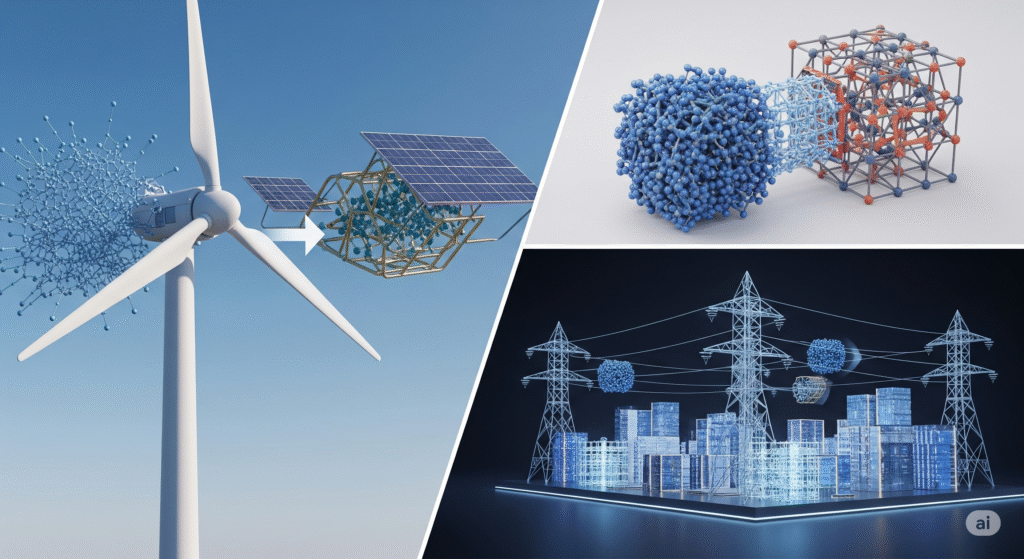
Nanotechnology, the science of manipulating matter at the atomic and molecular scale, is ushering in a new era for the energy sector. From enhancing battery capacity to improving solar panel efficiency, nanotech is becoming a powerful catalyst for sustainable, high-performance energy systems.
What Is Nanotechnology?
Nanotechnology involves structures and devices typically less than 100 nanometers in size—about 1,000 times smaller than the width of a human hair. At this scale, materials can exhibit unique physical and chemical properties, enabling breakthroughs that aren’t possible with conventional technologies.
Key Applications in the Energy Sector
1. Enhanced Solar Cells
One of the most promising uses of nanotechnology is in photovoltaics. Nanomaterials like quantum dots and nanowires are being integrated into solar panels to:
- Increase light absorption
- Lower production costs
- Improve energy conversion efficiency
Example: Perovskite solar cells enhanced with nanoparticles now rival traditional silicon-based cells, offering cheaper and more flexible alternatives.
2. Next-Gen Batteries and Energy Storage
Nanotechnology enables the creation of batteries that charge faster, last longer, and store more energy. Key developments include:
- Silicon nanowires in lithium-ion batteries, improving capacity up to 10 times.
- Nanostructured electrodes for faster ion transport and stability.
Impact: Electric vehicles (EVs) and portable electronics benefit from extended usage and reduced charging time.
3. Hydrogen Fuel Cells
Nanocatalysts can improve the efficiency of hydrogen production and fuel cells by lowering the activation energy required for reactions. This reduces:
- Energy consumption
- Precious metal dependency (like platinum)
4. Energy-Efficient Buildings
Nanocoatings applied to windows and walls can regulate heat and light transfer, reducing energy demands for heating and cooling. Nanoparticles in insulation materials also significantly cut down heat loss.
5. Carbon Capture and Storage (CCS)
Advanced nanomaterials, such as metal-organic frameworks (MOFs), can capture CO₂ emissions from industrial sources more effectively than traditional methods, aiding the fight against climate change.
Environmental Benefits
Nanotech doesn’t just enhance performance—it supports the shift toward cleaner, greener energy:
- Reduces reliance on fossil fuels
- Lowers carbon footprint
- Enables decentralized, smart energy systems
Challenges and Future Outlook
Despite its potential, nanotechnology in energy faces hurdles:
- High production costs
- Regulatory concerns about nanoparticle safety
- Scalability for commercial use
However, ongoing R&D is rapidly addressing these issues. With sustained investment, nanotech could become a cornerstone of the global energy transition.
Final Thoughts
The fusion of nanotechnology and the energy sector holds transformative potential. From solar energy to storage, nanotech is helping solve some of the most pressing challenges in sustainability and efficiency. As this technology matures, expect it to play a central role in powering our future.





